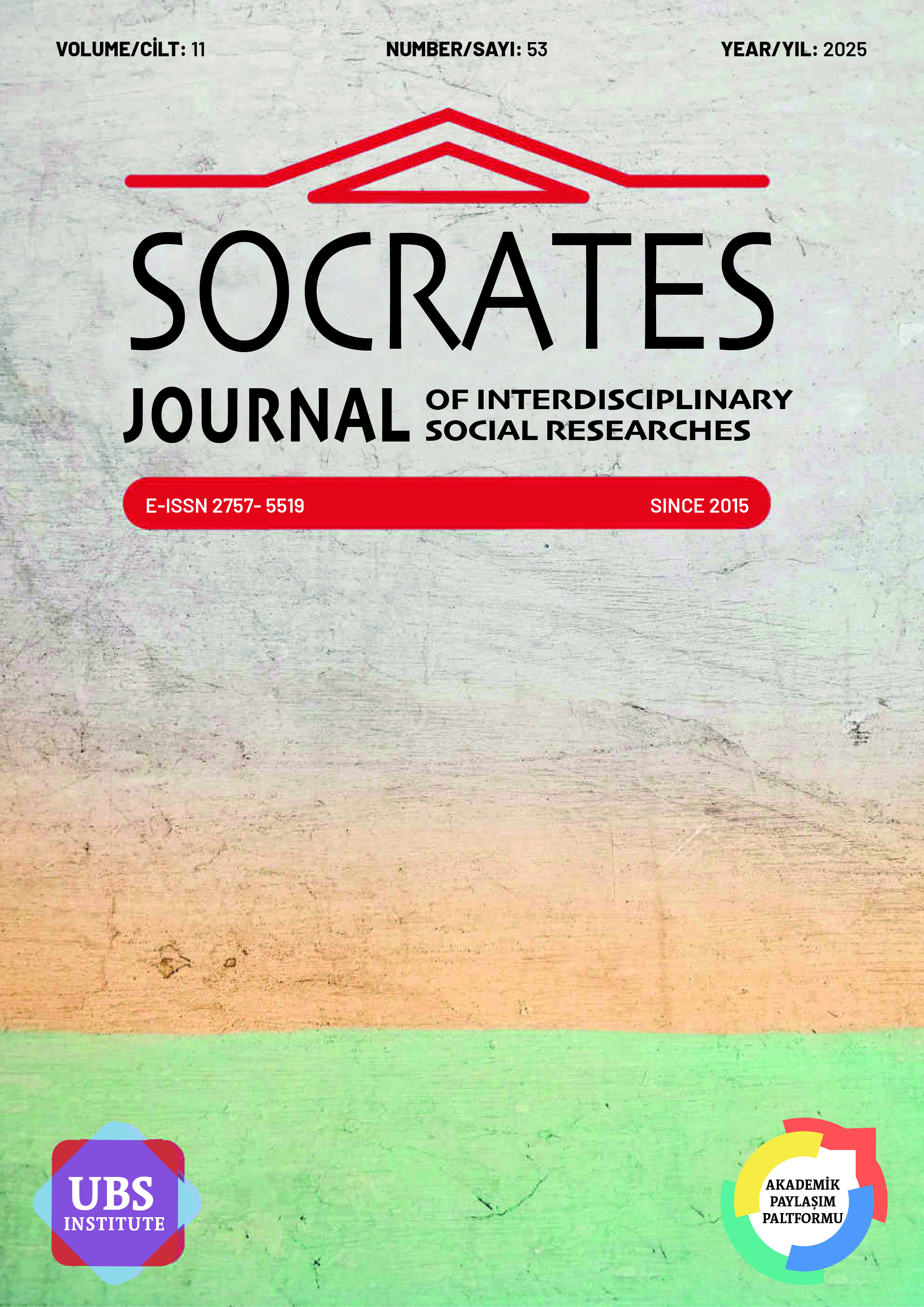EXAMINATION OF GRADUATE THESES MADE ON THE SUB-LEARNING FIELD OF PRIMARY SCHOOL MATHEMATICS COURSE DIVISION PROCESS
EXAMINATION OF GRADUATE THESES MADE ON THE SUB-LEARNING FIELD OF PRIMARY SCHOOL MATHEMATICS COURSE DIVISION PROCESS
DOI:
https://doi.org/10.5281/zenodo.15430299Keywords:
Primary School Mathematics Education, Division Operation, Postgraduate Theses, Content AnalysisAbstract
In this study, it was aimed to systematically and holistically analyze postgraduate theses focusing on the teaching of division at the primary school level in Turkey and to determine the academic trends in this field. Descriptive content analysis, one of the types of content analysis, was preferred as the research method. The universe of the study consists of postgraduate theses accessible via the National Thesis Center of the Council of Higher Education, published between 1994 and 2024, and focusing on primary school mathematics and division instruction. The sample of the study includes 42 postgraduate theses selected through criterion sampling. To collect data, the “Postgraduate Thesis Review Form” developed by the researcher was used. The data were analyzed through content analysis and the findings were reported descriptively. According to the findings, the majority of the theses were at the master’s level and focused on themes such as teaching strategies, student difficulties, and mathematical thinking. A significant increase in academic interest in division-related topics has been observed, especially after 2018. This increase is associated with transformations in educational policies, updates in curriculum programs, and the growing importance of student-centered teaching strategies. Additionally, the acceleration of digitalization and distance education during the COVID-19 pandemic contributed to the rise in the number of thesis studies. In particular, the rate of 23.8% reached in 2023 is considered a concrete indicator of the academic interest in restructuring education and digital teaching strategies after the pandemic. Moreover, it was observed that constructivist strategies such as game-based learning, multiple representations, contextual teaching, and the use of concrete materials were frequently employed. However, it was also determined that some theses lacked sufficient reporting regarding the validity and reliability of the data analysis process.
References
Ball, D. L. (1990). The mathematical understandings that prospective teachers bring to teacher education. The Elementary School Journal, 90(4), 449-466.
Chae, J., Seo, B. K., & Lee, K. H. (2015). Enhancing elementary students’ division problem solving through context-based instruction. International Journal of Educational Research, 71, 13-23.
Cohen, L., Manion, L., & Morrison, K. (2007). Research methods in education. Routledge.
Cotton, K. (2010). The schooling practices that matter most. ASCD.
Gümüş, F. ve Toptaş, V. (2022). Matematik öğretiminde yaratıcı etkinliklerin öğrenci başarısına etkisinin incelenmesi. Uluslararası Güncel Eğitim Araştırmaları Dergisi, 8(1), 140-163.
Hiebert, J., & Carpenter, T. P. (1992). Learning and teaching with understanding. In D. A. Grouws (Ed.), Handbook of research on mathematics teaching and learning (pp. 65-97). Macmillan.
Jayarajah, K., Saat, R.M., & Rauf, R.A.A. (2014). A review of science, technology, engineering & mathematics (STEM) education research from 1999–2013: A Malaysian perspective. Eurasia Journal of Mathematics, Science & Technology Education, 10(3), 155-163.
Krippendorff, K. (2004). Content analysis: An introduction to its methodology. Sage.
Lin, T.C., Lin, T.J., & Tsai, C.C. (2014). Research trends in science education from 2008 to 2012: A systematic content analysis of publications in selected journals, International Journal of Science Education, 36(8), 1346-1372.
Ma, L. (1999). Knowing and teaching elementary mathematics: Teachers’ understanding of fundamental mathematics in China and the United States. Lawrence Erlbaum Associates.
MEB. (2018). İlkokul Matematik Dersi Öğretim Programı (1-4. Sınıflar). Milli Eğitim Bakanlığı, Talim ve Terbiye Kurulu Başkanlığı.
Merriam, S. B. (Çev. Edit. Turan, S.) (2018). Nitel araştırma (Desen ve uygulama için bir rehber). Nobel Yayınevi.
Olkun, S.ve Toptaş, V. (2016). Resimli matematik terimleri sözlüğü. Ankara: Sonçağ Matbaacılık.
Rittle-Johnson, B., Siegler, R. S., & Alibali, M. W. (2001). Developing conceptual understanding and procedural skill in mathematics: An iterative process. Journal of Educational Psychology, 93(2), 346-362.
Skemp, R. R. (1987). The psychology of learning mathematics. Lawrence Erlbaum.
Toptaş, V., Olkun, S., Çekirdekçi, S. ve Sarı, M. H. (Ed.). (2020). İlkokulda matematik öğretimi. Vizetek.
Van de Walle, J. A., Karp, K. S., & Bay-Williams, J. M. (2012). Elementary and middle school mathematics: Teaching developmentally (8th ed.). Pearson.
Yıldırım, A. ve Şimşek, H. (2016). Sosyal bilimlerde nitel araştırma yöntemleri (10. Baskı). Seçkin Yayıncılık.
Downloads
Published
How to Cite
Issue
Section
License
Copyright (c) 2025 Socrates Journal of Interdisciplinary Social Studies

This work is licensed under a Creative Commons Attribution 4.0 International License.


